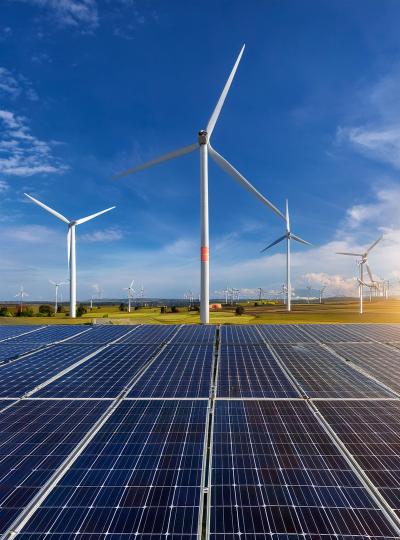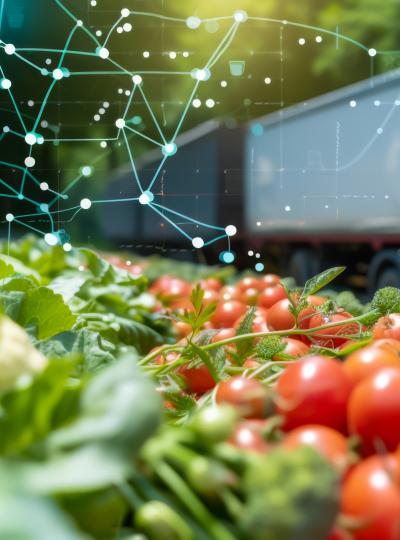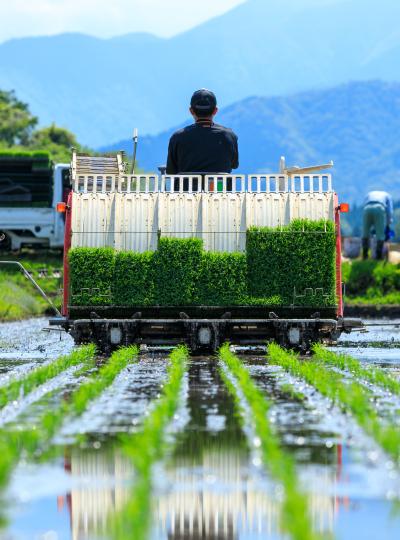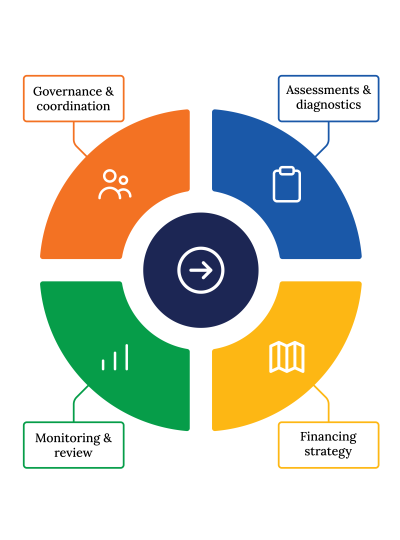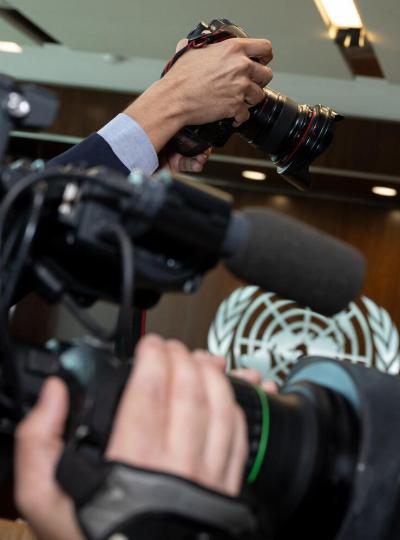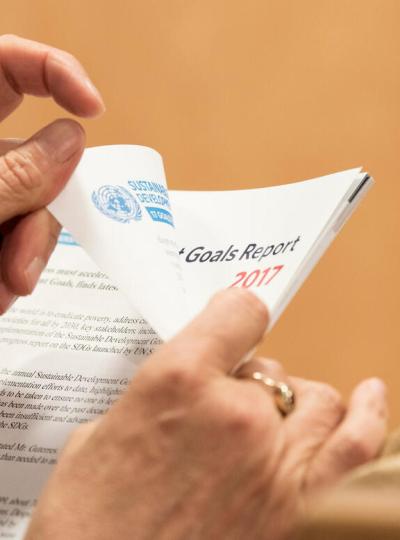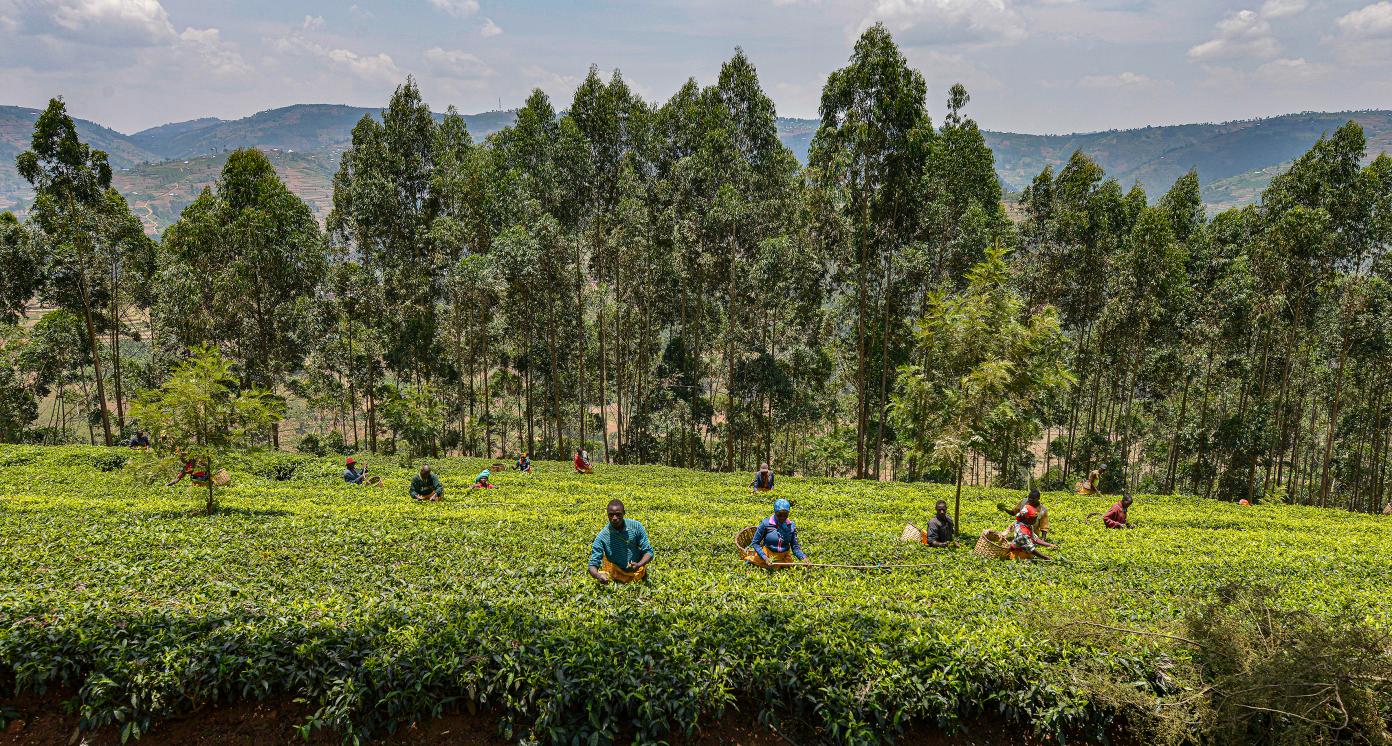Agricultural cold storage
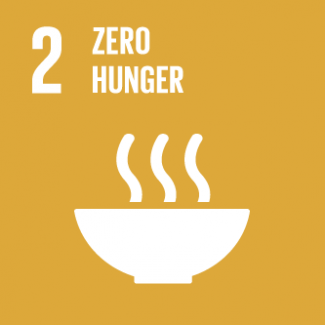
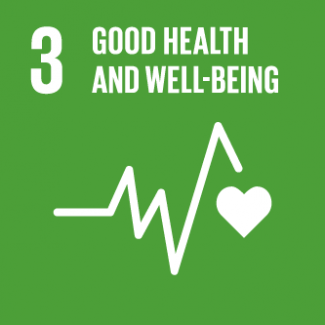
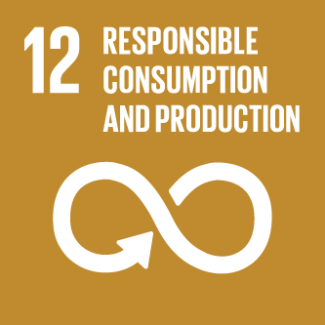
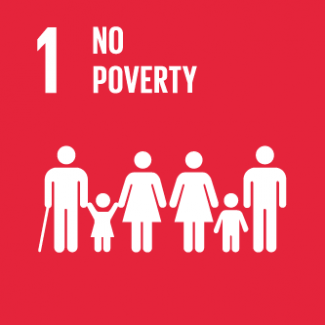
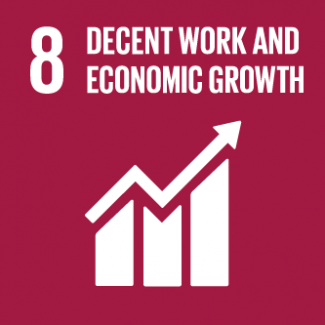
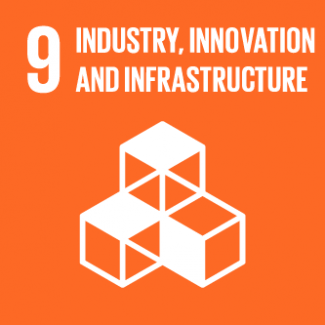
Business Model Description
Provide affordable and energy efficient pre-cooling and cold storage facilities for small and medium farmers close to farming areas for perishable agricultural products (meat, dairy, fruits and vegetables).
Expected Impact
Enhance farmer yields and incomes, contribute to food security and foster a positive trade balance.
How is this information gathered?
Investment opportunities with potential to contribute to sustainable development are based on country-level SDG Investor Maps.
Disclaimer
UNDP, the Private Finance for the SDGs, and their affiliates (collectively “UNDP”) do not seek or solicit investment for programmes, projects, or opportunities described on this site (collectively “Programmes”) or any other Programmes, and nothing on this page should constitute a solicitation for investment. The actors listed on this site are not partners of UNDP, and their inclusion should not be construed as an endorsement or recommendation by UNDP for any relationship or investment.
The descriptions on this page are provided for informational purposes only. Only companies and enterprises that appear under the case study tab have been validated and vetted through UNDP programmes such as the Growth Stage Impact Ventures (GSIV), Business Call to Action (BCtA), or through other UN agencies. Even then, under no circumstances should their appearance on this website be construed as an endorsement for any relationship or investment. UNDP assumes no liability for investment losses directly or indirectly resulting from recommendations made, implied, or inferred by its research. Likewise, UNDP assumes no claim to investment gains directly or indirectly resulting from trading profits, investment management, or advisory fees obtained by following investment recommendations made, implied, or inferred by its research.
Investment involves risk, and all investments should be made with the supervision of a professional investment manager or advisor. The materials on the website are not an offer to sell or a solicitation of an offer to buy any investment, security, or commodity, nor shall any security be offered or sold to any person, in any jurisdiction in which such offer would be unlawful under the securities laws of such jurisdiction.
Country & Regions
- Rwanda: Eastern Province
- Rwanda: Southern Province
- Rwanda: Kigali
Sector Classification
Food and Beverage
Development need
According to latest data, half of Rwanda's working age population (49.3%) is employed in the agriculture sector.(1) Additionally the sector provides 91% of the food supply, 70% of export revenues and contributes to 32.7% of the country's gross domestic product (GDP).(2)
Policy priority
Rwanda's Strategic Plan for Agriculture Transformation 4 (PSTA 4) 2018-2024 identifies agriculture to be the backbone for sustained economic growth and a major factor in transforming Rwanda from a low income to a knowledge‐based, middle income economy.(3)
Gender inequalities and marginalization issues
Two-thirds (67.7%) of all professionally active females and less than half (43.2%) of men work in agriculture in Rwanda. 61% of men and women working in agricultural sector are engaged in subsistence agriculture. Only 39% of this group is engaged in market-oriented agriculture; fewer women (34.5%) than men (45.1%) are involved in market-oriented agriculture.(1)
Investment opportunities introduction
According to sectoral studies, cold storage can provide a return on investment in a short period. The studies suggest the probabilities of making profits are high in first four years (50%, 75%, 90%, 97% each year respectively).(4)
Key bottlenecks introduction
Rwanda’s agricultural land expansion is limited by severe constraints, and the growing population adds pressure on agricultural incomes and increases the risk of accelerating land fragmentation and soil degradation. It is crucial to accelerate industrialization and commercialization of agriculture, as well as improve land use.(5)
Food and Agriculture
Development need
In Rwanda, post-harvest food losses reach up to 40%, and are caused, among other factors, by inappropriate storage.(6)
Development need
In Rwanda, post-harvest food losses reach up to 40%, and are caused, among other factors, by inappropriate storage.(6)
Agricultural Products
Pipeline Opportunity
Agricultural cold storage
Provide affordable and energy efficient pre-cooling and cold storage facilities for small and medium farmers close to farming areas for perishable agricultural products (meat, dairy, fruits and vegetables).
Business Case
Market Size and Environment
< USD 50 million
In 2019, Rwanda imported meat worth USD 240,000, dairy products worth USD 13.2 million, vegetables worth USD 19.5 million and fruits worth USD 7 million.(10) This demand for perishable fresh products could be satisfied domestically if food losses were reduced via cold storage.
Rwanda's fresh milk production amounts to approximately 160 million liters annually.(11) This produce needs to be properly refrigerated to reduce its perishability. Domestically, 100,000 tons of fruits and vegetables are traded in Rwanda every year in official markets, while an additional 27,000 tons are exported.(12)
The total meat production in Rwanda was over 94,000 tonnes in 2016-17. Currently, meat availability and consumption in Rwanda is below the amount recommended by the Food and Agriculture Organization (FAO): 8 kg per person per year in Rwanda, while the recommendation is 50 kg.(13)
Indicative Return
15% - 20%
This rate is a benchmark calculated as a cost of equity with a country risk premium, reflecting the average return required by investors active in the storage and packaging infrastructure subsector.(14)
Investment Timeframe
Short Term (0–5 years)
A regional benchmark company takes 12 months to pay back invested capital expenditure.(15)
A project analysis of solar powered cold storage found the payback timeframe is 3 years.(16)
Ticket Size
< USD 500,000
Market Risks & Scale Obstacles
Business - Supply Chain Constraints
Business - Supply Chain Constraints
Business - Supply Chain Constraints
Impact Case
Sustainable Development Need
Regardless of recent improvements in nutrition and alleviating poverty levels, Rwanda underscores significantly in SDG 2 - Zero Hunger.(6)
In Rwanda, approximately 40% of all perishable agricultural products (fruits, vegetables and others) were lost before reaching the market in 2016.(19)
Rwanda's milk availability and consumption is 63 liters per person per year, while the recommendation is 220 liters. Similarly, egg availability and consumption is 1 kg per person per year against the recommendation of 90 kg.(13)
Gender & Marginalisation
Two-thirds (67.7%) of all professionally active females and less than half (43.2%) of men work in agriculture in Rwanda. 61% of men and women working in agricultural sector are engaged in subsistence agriculture. Only 39% of this group is engaged in market-oriented agriculture; fewer women (34.5%) than men (45.1%) are involved in market-oriented agriculture.(1)
Expected Development Outcome
Fewer food losses and improved food security, which will alleviate poverty in rural areas as reduced food waste leads to higher incomes
Improved trade balance due to increased exports and reduced food imports
Improved access to proteins for the whole population, improving health and human capital development
Gender & Marginalisation
Investments could help female farmers, by increasing access to markets, improving efficiency, and thereby increasing their revenues.
Primary SDGs addressed

2.1.1 Prevalence of undernourishment
2.3.2 Average income of small-scale food producers, by sex and indigenous status
2.5.1 Number of plant and animal genetic resources for food and agriculture secured in either medium- or long-term conservation facilities
36.8% (33)
USD 184.82 (36)
Passport data for 43 collected plant genetic resources were entered into computers for better management (34)
0 (33)
N/A
N/A

3.9.3 Mortality rate attributed to unintentional poisoning
1.32 per 100,000 individuals (35)
N/A

12.3.1 (a) Food loss index and (b) food waste index
N/A
N/A
Secondary SDGs addressed



Directly impacted stakeholders
People
Gender inequality and/or marginalization
Planet
Corporates
Public sector
Indirectly impacted stakeholders
People
Planet
Corporates
Outcome Risks
Pollution caused by compounds used for refrigeration and electricity generation
Health problems for workers exposed to cold temperatures (20)
Significant increase in energy consumption
Impact Risks
Evidence risk because it may be difficult to track impact generated through this investment opportunity area given limited data availability
Impact Classification
What
Scaling up cold storage for perishable agricultural products would improve food security, reduce food losses, increase employment opportunities and create a positive trade balance.
Who
Farmers with reduced incomes due to high product losses. Processing facilities, wholesalers and retailers who will benefit from improved food security.
Risk
Unreliable electricity supply poses the risk of frequent power shortages.
Impact Thesis
Enhance farmer yields and incomes, contribute to food security and foster a positive trade balance.
Enabling Environment
Policy Environment
Vision 2050: This policy outlines 'sustained food security and nutrition for all households and age groups' as one of Rwanda's basic development needs. Meeting that need requires investments in an appropriate food storage infrastructure.(21)
Strategic Plan For Agriculture Transformation 2018-24 (PSTA 4): This plan recognizes storage as one of the key pillars for the agricultural value chain and food loss reduction. The document indicates a need to scale up, modernize and improve the accessibility of cold storage facilities.(9)
National Agriculture Policy: This policy focuses on encouraging better post-harvest management and the further development of agri-food processing through 'continuing to subscribe to a family-farm-centric model, enhanced farmer cooperation and private-sector-led development of the agri-food economy'.(22)
7 Years Government Programme - National Strategy for Transformation (NST 1) 2017 – 2024): This programme recognizes modernizing and increasing the the productivity of agriculture and livestock as one of the key priorities for Rwanda's development.(23)
Financial Environment
Financial incentives: The government provides an investment allowance of 40% in new/used assets for investment amounts of at least USD 44,000, and if business assets are held for at least 3 tax periods. The government also presents grants and special capital access for investors who promote business and development in rural areas.(28)
Fiscal incentives: 50% corporate income tax reduction (to 15%) for agro-processing companies, accelerated depreciation rates, import duty exemptions for agricultural machinery, and a value added tax (VAT) exemption on agricultural inputs and livestock material.(29)
Other incentives: access to logistics resources (e.g. trucks, packhouses), support to acquire land and capital, dedicated support team, free business registration, no restrictions on foreign ownership and no restrictions on capital flows.(29)
Regulatory Environment
Law No 47/2012 of 14/01/2013: This law regulates food and pharmaceutical products, and prohibits manufacturing, preparing, storing, packaging or keeping food products for sale without compliance with hygiene requirements.(24)
National Cooling Strategy 2019: This strategy provides minimum energy performance standards for cooling equipment, maximum energy use requirements, functional performance requirements, refrigerant requirements and labelling requirements.(25)
The Ministry of Agriculture is responsible for providing frameworks and resolving issues related to agricultural productivity and handling.(9)
Rwanda Green Fund (FONERWA) publishes numerous guidelines and laws and policies relating to sustainable agriculture.(26)
The Ministry of Health is responsible for all regulations and Ministerial orders and guidelines related to food production and handling.(27)
Marketplace Participants
Private Sector
InspiraFarms, DP World, AgriProFocus, Freshbox
Government
Ministry of Agriculture, Rwanda Green Fund (FONERWA), Ministry of Health, Rwanda Agriculture and Animal Resources Development Board (RAB)
Multilaterals
Food and Agriculture Organization of the United Nations (FAO), World Agroforestry Centre (ICRAF), International Fund for Agricultural Development (IFAD)
Non-Profit
German Corporation for International Cooperation (GIZ)
Target Locations
Rwanda: Eastern Province
Rwanda: Southern Province
Rwanda: Kigali
References
- (1) National Institute of Statistics of Rwanda (2020). Labour Force Survey Trends August 2020 (Q3). http://www.statistics.gov.rw/publication/labour-force-survey-trends-august-2020q3
- (2) International Fund for Agricultural Development (2019). Country Strategic Opportunities Programme 2019 – 2024 for the Republic of Rwanda. https://www.gtai.de/resource/blob/45938/fe1c62c39e821a638471d69ef0ee5261/pro201904175029-data.pdf
- (3) Ministry of Agriculture and Animal Resources (2018). Strategic Plan For Agriculture Transformation 2018-2024. Republic of Rwanda. http://extwprlegs1.fao.org/docs/pdf/rwa180543.pdf
- (4) Yilmaz, D.and Yilmaz, I.C. (2020). 'Comparative Cost Assessment of Cold Storage Plants and Natural Storage Structures for Potatoes', Potato Resources. https://doi.org/10.1007/s11540-020-09454-0
- (5) Ministry of Agriculture and Animal Resources (2018). Strategic Plan For Agriculture Transformation 2018-2024. Republic of Rwanda. http://extwprlegs1.fao.org/docs/pdf/rwa180543.pdf
- (6) World Bank (2020). Rwanda Food Smart Country Diagnostic. http://documents1.worldbank.org/curated/en/288911601302842762/pdf/Rwanda-Food-Smart-Country-Diagnostic.pdf
- (7) Gatete, C. (2016). The Rwanda we want: Towards ‘Vision 2050’. https://www.minecofin.gov.rw/fileadmin/user_upload/Minecofin/Speeches/Hon_Gatete_Umushyikirano_Presentation_2016.pdf
- (8) African Development Bank (2013). Rwanda Transport Sector Review and Action Plan. https://www.afdb.org/fileadmin/uploads/afdb/Documents/Project-and-Operations/Rwanda_-_Transport_Sector_Review_and_Action_Plan.pdf
- (9) Ministry of Agriculture and Animal Resources (2018). Strategic Plan For Agriculture Transformation 2018-2024. Republic of Rwanda. http://extwprlegs1.fao.org/docs/pdf/rwa180543.pdf
- (12) Rwanda Development Board. Horticulture – The Rwanda opportunity.
- (13) Food and Agriculture Organization of the United Nations (2019). Modernizing Rwanda's livestock to attract investment and enhance food security. http://www.fao.org/rwanda/news/detail-events/en/c/1185157/
- (14) PwC analysis based on Prof. A. Damodaran data, 2020.
- (15) Alliance for a Green Revolution in Africa (2019). The Agribusiness Deal Room at the 2019 African Green Revolution Forum (AGRF). https://agrf.org/dealroom/wp-content/uploads/2020/07/Agribusiness-Deal_Room-AGRF-booklet_020919.pdf
- (16) Badelt, G. (2019). 'De-carbonizing the post-harvesting phase of the agri-food chain Viability and smart business modeling', GeoCode International. https://unfccc.int/sites/default/files/resource/UNFCC_pptHandout.pdf
- (17) De Dieu Niyonteze, J., Zou, F., Norense Osarumwense Asemota, G., Bimenyimana, S. and Shyirambere, G. (2020). Key technology development needs and applicability analysis of renewable energy hybrid technologies in off-grid areas for the Rwanda power sector.[https://www.ncbi.nlm.nih.gov/pmc/articles/PMC7002852]
- (18) International Fund for Agricultural Development (2019). Country Strategic Opportunities Programme 2019 – 2024 for the Republic of Rwanda. https://www.gtai.de/resource/blob/45938/fe1c62c39e821a638471d69ef0ee5261/pro201904175029-data.pdf
- (19) Alliance for a Green Revolution in Africa (2019). Major Initiative to Boost Cold Storage Capacity in Africa Launched at World Economic Forum in Rwanda. https://agra.org/ifc-and-wfp-collaborate-to-finance-smallholder-farmers-in-rwanda-and-tanzania-2/
- (20) Badger Australia. Is Working in Cold Storage Bad for your Health? https://www.badgeraustralia.com.au/blog/is-working-in-cold-storage-bad-for-your-health/
- (21) Gatete, C. (2016). The Rwanda we want: Towards ‘Vision 2050’. https://www.minecofin.gov.rw/fileadmin/user_upload/Minecofin/Speeches/Hon_Gatete_Umushyikirano_Presentation_2016.pdf
- (22) Ministry of Agriculture and Animal Resources (2017). National Agriculture Policy.
- (23) Republic of Rwanda. 7 Years Government Programme: National Strategy for Transformation (NST 1) 2017 – 2024.
- (24) Republic of Rwanda. Official Gazette n° Special of 17/01/2013. http://extwprlegs1.fao.org/docs/pdf/RWA131821.pdf
- (25) Republic of Rwanda (2019). National Cooling Strategy. http://www.fonerwa.org/sites/default/files/Rwanda%20National%20Cooling%20Strategy.pdf
- (26) Rwanda Green Fund. Publications. http://www.fonerwa.org/publications
- (27) Ministry of Health. About us. https://moh.gov.rw/index.php?id=380&L=1%27%22
- (28) Africa Legal Network (2015). Investment Guide - Rwanda. https://www.africalegalnetwork.com/wp-content/uploads/2015/12/Rwanda-Investment-Guide-2015.pdf
- (29) Republic of Rwanda. The Law on Investment Promotion and Facilitation. https://rdb.rw/wp-content/uploads/publications/Investment%20Promotion%20Law%202015%20(Investment%20code)).pdf
- (30) Mazimpaka, E (2017). 'Characterization of Cattle Production Systems in Nyagatare District of Eastern Province, Rwanda', Rheolology open access, 1(2): 107. https://www.omicsonline.org/open-access/characterization-of-cattle-production-systems-in-nyagatare-district-ofeastern-province-rwanda.php?aid=91895
- (31) AMIS Rwanda. http://www.amis.minagri.gov.rw/maps?field_coverage_tid=All&field_commodity_chain_tid=All&field_stakeholder_type_tid=All&field_keywords_tid=
- (32) Alliance for a Green Revolution in Africa (2019). Major Initiative to Boost Cold Storage Capacity in Africa Launched at World Economic Forum in Rwanda. https://agra.org/ifc-and-wfp-collaborate-to-finance-smallholder-farmers-in-rwanda-and-tanzania-2/
- (33) Sachs, J., Schmidt-Traub, G., Kroll, C., Lafortune, G., Fuller, G., Woelm, F. (2020). The Sustainable Development Goals and COVID-19. Sustainable Development Report 2020. Cambridge: Cambridge University Press.https://dashboards.sdgindex.org/profiles/RWA
- (34) Republic of Rwanda (2019). Voluntary National Review Rwanda 2019. https://sustainabledevelopment.un.org/content/documents/23432Rwanda_VNR_Document__Final.pdf
- (35) SDG Tracker (2021). Measuring progress towards the Sustainable Development Goals. https://sdg-tracker.org/
- (36) United Nations. Sustainable Development Goals. https://unstats.un.org/sdgs/indicators/database/





